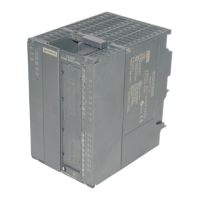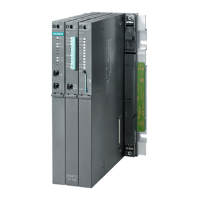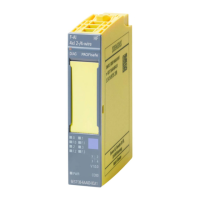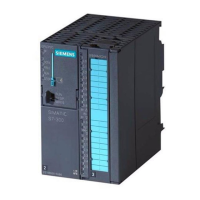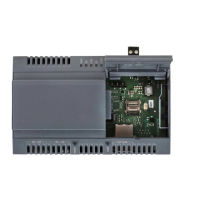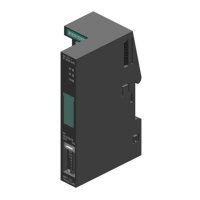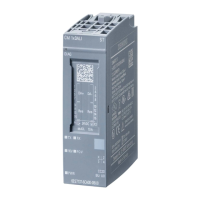Description of Functions
9-71
FM 353 Stepper Drive Positioning Module
6ES7 353-1AH01-8BG0
9.7.2 Drive interface
Overview
As a minimum, actuation of the stepper drive for controlling the movement se-
quence takes place by way of the signals “Pulse” and “Direction”. By way of these
signals for specifying distance beyond the stepper drive, the FM 353 optionally pro-
cesses additional signals from different drive ports.
Standard signals “pulse”, “direction”
Through the FM 353, pulse length is automatically set to Τ = 0.5MD41.
Direction of rotation for the stepper drive is controlled with the direction signal.
The level of both signals can be parameterized.
MD Designation Value/Meaning
37 Special control signals
37.8 Pulse output inverted 0: Pulse high active
1: Pulse low active
Output signal
37.9 Direction output inverted 0: low sign. = direction +
1: low sign. = direction −
Output signal
Optional signals “servo enable”, “servo ready”
These signals are used to activate the drive. The “Servo ready” signal can be con-
nected to the FM 353 either via the X2 connector at TTL level, or X1, with the 24 V
level (see Section 4).
The active level for both signals can be parameterized.
MD Designation Value/Meaning
37 Special control signals
37.0 Controller enable active 0: Signal not used
1: Signal used
Output signal
37.2 Controller ready active 0: Signal not connected
1: Signal is connected
Input signal
37.3 Controller ready inverted 0: Controller ready high active
1: Controller ready low active
37.4 Controller ready input
selection
0: at Front panel connector X1 (RM)
1: at D Sub connector X2
(Ready1_N)
In all operating modes except Control mode, the “servo enable” signal is required
for the duration of every traversing movement, irrespective of the parameter defini-
tions. If the servo enable is not detected or is deactivated during the movement,
the “servo enable missing” message is triggered (see Table 11-5, Class 3/No. 61).
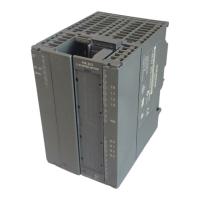
